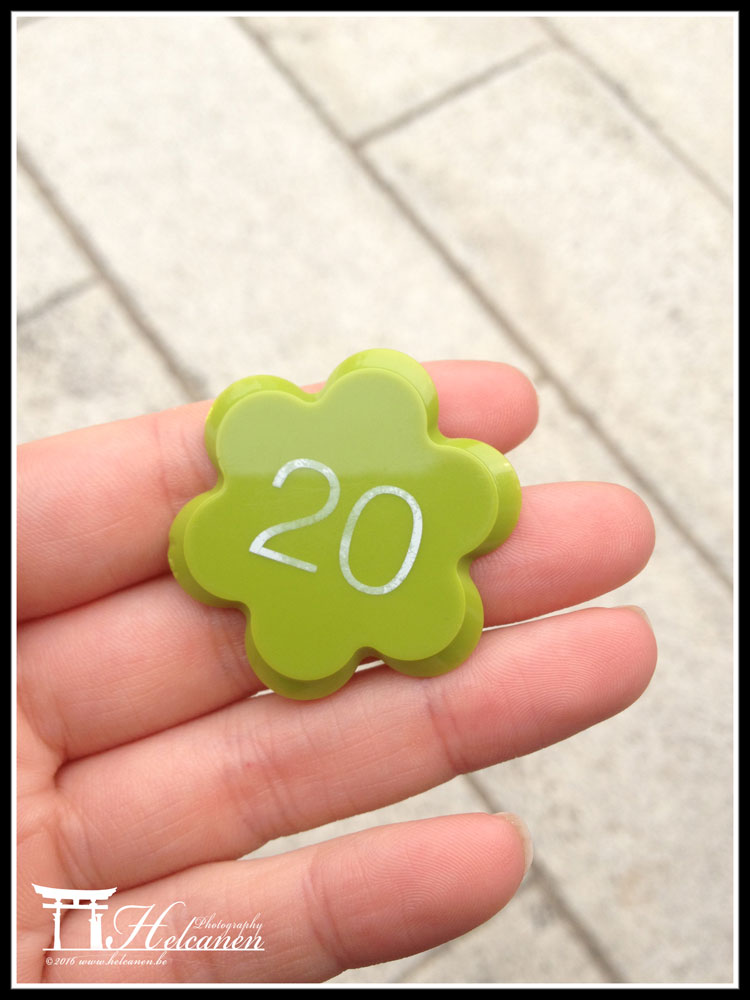
GOSHUIN
December 15, 2016I learned about the "goshuin" only in 2015 and started to collect them on my 6th trip. I found it only by hasard on the net while searching info about the stamps to collect in the JR train stations. (for a next blog)
I would have been happy if someone talked about it much earlier, that's why I share this with you now.
Photo gallery here
What's a "goshuin"?
A goshuin ご朱印 (or "shuin") is a seal stamp given in Shinto shrines and Buddhist temples.
Everybody can collect them, pelgrims or simple visitors (tourists and Japanese) only have to present their book (goshuin-chô). If you don't have a goshuin-chô, no worries, you can simply ask 1 goshuin and the monk will give one on a simple paper.
This one is generally made by a Monk of the shrine/temple, and in some rare occasions, done by a Maid of the shrine or the calligraphy by the monk and the stamps by the maid or another monk.
The goshuin is composed by calligraphy and red stamps. But not always red... I found during this 2016 summer's trip some little shrines having some extra colors for the stamps.

|
 |
 |
... and a "goshuin-cho"?
A "goshuin-cho" 御朱印所 is the book to collect the "goshuin" (accordion pages).
You can find many designs, so don't rush to buy the 1st one you see unless you really like that one.
For my 1st book, I asked to one of my Japanese friends if there were nice designs in Kyoto. She sent me some pictures and decided then to wait to visit Kyoto to get the one with the twin dragons (Kennin-ji).
If you want to buy the book, most of time you can see them at the little "office/booth" where they sell the "omikuji" etc.
If you don't see any, maybe they don't have any... but not always. So, simply ask "goshuin-cho de arimasuka?" to be sure.
My 1st book from Kyoto was nearly full and I really needed to get a new one to continue the collection.
In Takasaki (Kannon-sama) none were exposed but in fact they had some different models on the side.
 |
 |
How to collect them?
御朱印所 (goshuin-cho) -> Usually written to inform that you can collect here a goshuin0
But as the kanji are not always easy to remember, you can simply ask "Goshuin de arimasuka?" 御朱印でありますか?
Most of the time, they do them in the little office where you can buy the omikuji and books, so you can see them doing the calligraphy. Usually, photos are forbidden.
Sometimes you have to go to another "office" to get the goshuin but no worries the monks/maid are telling you where it is.
When it's crowded or the monks/maid are taking your book to the back office, you may recieved a token/number.
If you don't really need a book and simply want to collect a few goshuin as souvenir, you can get it on a paper.
Since I had to wait to buy the book in a specific temple of Kyoto, I have some papers with goshuin from Tokyo & Kyoto.
If you plan to visit more than 1 shrine/temple, I will recommend you to get a book. Why? Usually the goshuin on a simple sheet are made in advance, they simply add the date when you buy it. With the book, you can often see the monk doing the calligraphy in front of you.
 |
 |
 |
How much is it?
Goshuin:
* 300円 (+/- 2,5€): this is the usual price
* Donation: you can give what you want for the goshuin. If you don't know what to give, just give the usual 300 yen.
* 200円, it happened only once, it was in a small village in Gunma.
* 500円, the highest price I paid so far, but it was the special one with different stamp's colors + a charm and candies.
Goshuin-cho:
The price vary from 1000円 to 2000円, the higest price I saw was maybe 2500円. It depends of the shrine, the design and area.
The books I got from Kyoto were around 1600円, the design are really beautiful with traditional painting designs, and the goshuin was included in the price.
When you collect your goshuin, you also recieve a flyers or program with the information of the shrine/temple. When you travel, it's sometimes hard to remember where it is from, it might be helpful to recall the places.
The date of the goshuin is written in Japanese, it's also a good information to remember the place, but sometimes the calligraphy style makes it hard to read.
There is often a little sheet placed in your goshuin to prevent from any marks of your goshuin on the opposite page. I kept many of them as there are usually Japanese texts (words of the shrine etc).



